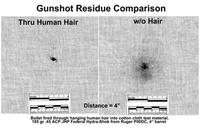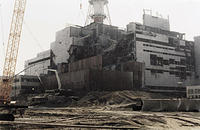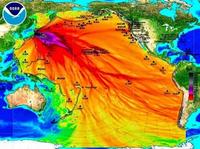-
New drone-based system improves safety of dealing with nuclear hazards
Hazardous nuclear events have the potential to cause widespread damage to individuals and the environment. Getting close enough to these incidents to accurately assess the problem can be extremely dangerous. Following the incident at the Fukushima power plant in Japan in 2011, for example, helicopter pilots assessing the site were exposed to significant amounts of radiation. Researchers have developed a new system for remote and accurate assessment of dangerous nuclear accident sites.
-
-
Obscure element shows promise for nuclear waste storage

One of the least known elements of the periodic table, californium, may hold the key to the safe and effective long-term storage of nuclear waste, according to new research. The researchers have demonstrated that californium (Cf) has an “amazing” ability to bond and separate other materials, as well as being extremely resistant to radiation damage.
-
-
Real-life CSI: The stories gunshot residue tell

The popular TV series “CSI” is fiction, but every day, real-life investigators and forensic scientists collect and analyze evidence to determine what happened at crime scenes. In a new study, scientists say they have developed a more rapid and accurate method that could allow crime scene investigators to tell what kind of ammunition was shot from a gun based on the residue it left behind.
-
-
West Virginia chemical spill degrades air, water quality
In the more than two months since the 9 January chemical spill into West Virginia’s Elk River, new findings reveal the nature of the chemicals that were released into the water and then into the air in residents’ houses. The lack of data motivated researchers to take on essential odor-related research that went beyond their National Science Foundation Rapid Response Research grant to better understand the properties of the chemical mixture called crude 4-methylcyclohexane methanol, the major component in the crude mix of the spilled chemicals into the Elk River
-
-
New infrared technique remotely to detect dangerous materials
Researchers say that infrared technology holds the potential to spot from afar whether a site is being used to make nuclear weapons. They developed a model which precisely characterizes the material in each pixel of an image taken from a long-wave infrared camera. The U.S. National Nuclear Security Administration (NNSA) funded the project. The government’s long-term goal for infrared technology is remotely to detect the exact materials, chemicals and gases coming and going from factories or other sites suspected of illegal nuclear production.
-
-
Radiation damage to Chernobyl’s ecosystems helps spread radioactivity

Radiological damage to microbes near the site of the Chernobyl disaster has slowed the decomposition of fallen leaves and other plant matter in the area, according to a new study. The resulting buildup of dry, loose detritus is a wildfire hazard that poses the threat of spreading radioactivity from the Chernobyl area.
-
-
S.C. sues DOE over Savanah River MOX facility
South Carolina decided to go to court to prevent the Obama administration from cutting off funding for a troubled multi-billion dollar Savanah River plant in which weapons-grade plutonium would be processed and turned into suitable fuel for commercial nuclear reactors. The initial budget for the MOX project, when it was launched a decade ago, was just under $4 billion. Since then, construction costs have reached $8 billion, and DOE officials now say the plant will cost about $30 billion over the years it is in use.
-
-
DOE: Contrary to rumor, there are no evacuation plans for southeastern New Mexico
The Department of Energy (DOE) said the other day that an Internet rumor which has been fueling concerns earlier this week about the need to be prepared to evacuate southeastern New Mexico because of recent events at the Waste Isolation Pilot Plant (WIPP) is “absolutely” without basis. DOE notes that monitoring conducted by Nuclear Waste Partnership of air, soil, water, and vegetation are showing no radiation releases that would approach levels causing health concerns.
-
-
Shale may offer long-term home for nuclear waste
About 77,000 tons of spent nuclear fuel currently sit in temporary above-ground storage facilities, and it will remain dangerous for tens or hundreds of thousands of years or longer. Experts say that since the U.S. government abandoned plans to develop a long-term nuclear-waste storage site at Yucca Mountain in Nevada in 2009, finding new long-term storage sites must be a priority. Shale deep under the Earth’s surface could be a solution. France, Switzerland, and Belgium already have plans to use shale repositories to store nuclear waste long-term.
-
-
Synthetic biology makes bioweapons easier to make
Scientists and policy makers are no longer unconditionally promoting scientific innovation for fear that current and future biological breakthroughs may lead to dangerous applications. Traditionally, government-backed institutions and pharmaceutical firms fueled biological innovation, but today, the barriers that limited innovation to those institutions are diminishing. The low cost and significantly reduced level of necessary expertise have provided anyone interested in developing biological technology the tools to do so. Synthetic biology, the design and engineering of biological devices and systems, has given terrorists the capability to launch attacks using synthetic organisms without detection.
-
-
Israel State Comptroller says some IDF units unprepared for chemical attack
Israel’s State Comptroller Joseph Shapira on Wednesday harshly criticized the Israel Defense Force (IDF) for not having sufficient number of gas masks for one of its branches. The comptroller levelled his criticism in the unclassified portion of his discussion of defense issue in his annual report on government performance. In February, Israel has discontinued the distribution of gas masks to the general population, and the dismantling of Syria chemical weapons arsenal has led some Israeli defense experts to question the need for Israel to continue and invest in defensive measures against chemical weapons attacks.
-
-
Budget proposal cuts funds for nuclear nonproliferation programs
The White House’s fiscal 2015 budget proposal includes more than $220 million in cuts for nuclear security initiatives such as the International Material Protection and Cooperationprogram, which aims to secure and eliminate vulnerable nuclear weapons and materials, and the Global Threat Reduction Initiative, which supports the Energy Department’s efforts to prevent terrorists from acquiring nuclear and radiological materials that could be used in weapons of mass destruction. The administration says that 54 percent of the reduction in the administration’s nonproliferation budget request can be accounted for by the decision to halt the South Carolina Mixed Oxide Fuel Fabrication Facility(MOX), which would have convert weapons-grade plutonium into nuclear reactor fuel, because the project proved to be too costly.
-
-
S.C. politicians want decision to halt work on Savannah River plutonium plant reversed
Three Republican lawmakers from South Carolina — Senator Lindsey Graham and Representatives Tim Scott and Joe Wilson have – have asked South Carolina governor Nikki Haley to “explore any legal avenues” to prevent the mixed-oxide fuel (MOX) project at the Savannah River Sitefrom shutting down. The administration has decided to put the project on hold after repeated delays and cost overruns averaging 60 percent over the original estimates.
-
-
Loa Alamos lab has nowhere to send its nuclear waste
With the U.S. only underground nuclear waste repository shut down owing to radiation leaks, Los Alamos National Laboratory found itself facing a problem: it has to find an alternative place to ship toxic waste from a mesa on its northern New Mexico campus, and it has until June to do so. The problem is shared by other sites with nuclear waste. The fact that the repository has been shut down indefinitely means that soon nuclear waste will begin to backup ate various locations around the country where nuclear weapons-related activity is taking place.
-
-
Radiation from Fukushima to reach West Coast in April

On the third anniversary of the Fukushima nuclear plant incident, scientists are reporting that low levels of radiation from the Fukushima plant will reach ocean waters along the U.S. West Coast by April 2014. The scientists say that the radiation will be at levels too low to harm humans, but they call for more monitoring, including at the federal level.
-
More headlines
The long view
Keeping the Lights on with Nuclear Waste: Radiochemistry Transforms Nuclear Waste into Strategic Materials
How UNLV radiochemistry is pioneering the future of energy in the Southwest by salvaging strategic materials from nuclear dumps –and making it safe.
Model Predicts Long-Term Effects of Nuclear Waste on Underground Disposal Systems
The simulations matched results from an underground lab experiment in Switzerland, suggesting modeling could be used to validate the safety of nuclear disposal sites.
